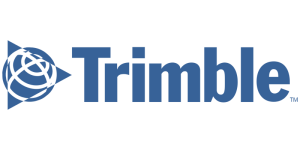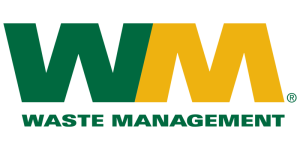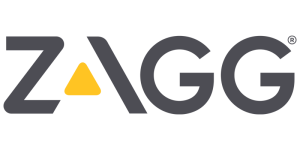What new metrics may become popular for measuring SEO outreach effectiveness in 2024?
As we voyage through the ever-evolving landscape of digital marketing, JEMSU remains at the forefront, continuously adapting to the shifting terrain of search engine optimization (SEO). With 2024 on the horizon, it’s time to forecast the metrics that will define SEO outreach effectiveness in the coming year. The perpetual quest for visibility on the vast digital horizon has long hinged on traditional metrics like keyword rankings, organic traffic, and backlink quality. But as algorithms grow more sophisticated and user behavior becomes more complex, JEMSU anticipates a new wave of metrics that will revolutionize how we measure the success of SEO campaigns.
The digital marketing mavens at JEMSU understand that the future of SEO is not just about dominating search engine results pages but about creating meaningful engagements and fostering trust with audiences. In 2024, we expect to see a surge in the importance of user experience signals, brand sentiment analysis, and voice search optimization metrics. These new benchmarks will not only quantify the reach of your SEO efforts but also qualify the resonance of your brand’s message in a crowded online ecosystem. JEMSU’s commitment to innovation ensures that we are always ready to harness these emerging metrics to propel our clients’ outreach strategies into new realms of effectiveness.
Instant SEO Checker + Score & Report
Enter the URL of any landing page to see how optimized it is for one keyword or phrase...
User Engagement Metrics
In the rapidly evolving world of SEO, user engagement metrics are becoming an increasingly important gauge of outreach effectiveness. As a leading digital advertising agency, JEMSU recognizes the critical role these metrics play in understanding how users interact with online content. User engagement metrics encompass a variety of data points, including time on page, pages per session, bounce rate, and click-through rate (CTR).
For instance, time on page can offer insights into how captivating and relevant the content is for the audience. A higher time on page generally indicates that users find the content engaging and valuable, which can lead to improved search rankings. JEMSU leverages this information to optimize clients’ content and ensure it resonates with their target audience.
Pages per session is another telling metric. It reflects the depth of users’ interaction with a site. JEMSU uses this data to understand user behavior and to guide website structure improvements, ensuring that users can easily find related content and continue their journey through the site.
Bounce rate is a widely discussed metric, shedding light on the percentage of visitors who leave the site after viewing only one page. A high bounce rate might suggest that the content is not meeting users’ expectations or that the landing page is not sufficiently compelling. At JEMSU, we meticulously analyze bounce rate in conjunction with other metrics to identify potential content or user experience issues.
The click-through rate (CTR) from search results to a website is a direct measure of how effective a page’s title tag and meta description are at capturing the attention of users. JEMSU pays close attention to CTR trends to craft meta tags that stand out in the SERPs and entice users to click.
An analogy that fits here is that of a retail store: User engagement metrics are like the behavior of customers in a shop. If customers come in, browse through multiple aisles (pages per session), spend a considerable amount of time looking at products (time on page), and not just walk out immediately after entering (bounce rate), it’s a sign the store is appealing. Similarly, these metrics indicate how appealing and user-friendly a website is.
JEMSU incorporates these user engagement metrics into comprehensive SEO strategies, constantly refining and adapting tactics to meet the ever-changing landscape of user behavior and search engine algorithms. By focusing on enhancing user engagement, JEMSU not only aims to improve SEO outreach effectiveness but also strives to provide a better user experience, which in turn can lead to higher conversion rates and customer loyalty.
Google Ads Success Example
The Challenge: The Challenge: Increase new dental patients with better Google Ads campaigns.
SERP Feature Occupancy
In the ever-evolving landscape of SEO, SERP (Search Engine Results Page) Feature Occupancy is quickly becoming a crucial metric for agencies like JEMSU to monitor and optimize. As the name suggests, this metric revolves around the extent to which a brand or website occupies the various features in SERPs beyond the traditional organic listings. These features include but are not limited to Google’s Knowledge Graph, Featured Snippets, Local Pack listings, Image Packs, and the People Also Ask boxes.
The importance of SERP Feature Occupancy lies in its ability to significantly increase a website’s visibility and click-through rates. For instance, a Featured Snippet can provide not just a top spot in search results but also a sizeable excerpt from the website, which can enhance credibility and user trust. In 2024, as the competition for organic visibility intensifies, securing these coveted spots is likely to be a key objective for SEO experts at JEMSU.
JEMSU understands that dominating these features often requires a tailored approach to content creation and SEO strategy. For example, to capture a Featured Snippet, content must be structured in a way that directly answers questions or provides clear, concise information. This could be analogous to a chef carefully crafting a dish to meet the specific criteria of a culinary competition, knowing that presentation is just as crucial as taste.
The strategic importance of SERP Feature Occupancy is underscored by stats indicating that Featured Snippets can garner a click-through rate of over 8%, a significant jump compared to standard listings. This showcases the potential impact on traffic and, consequently, on potential leads and conversions for businesses that JEMSU partners with.
In practice, JEMSU might work with a client to optimize their local SEO in order to appear in the Local Pack for location-based queries. This would be particularly impactful for brick-and-mortar businesses looking to drive foot traffic. By appearing in the Local Pack, a business not only gains visibility but also offers potential customers quick access to essential information like addresses, reviews, and hours of operation.
As SERP features continue to evolve, JEMSU is poised to help businesses navigate these changes and capitalize on new opportunities to enhance their online presence. By tracking SERP Feature Occupancy, JEMSU ensures that its clients are not only seen but also positioned as authoritative sources, directly in the line of sight of their target audience.
Voice Search Optimization Metrics
With the increasing prevalence of smart speakers and virtual assistants, voice search optimization metrics are gaining significant attention among SEO professionals. At JEMSU, we understand the importance of optimizing for voice search as it is becoming integral to the way consumers find information online. As we move into 2024, these metrics are expected to evolve, providing us with more refined data to analyze user behavior and the effectiveness of SEO strategies tailored for voice search.
Voice search differs from traditional text-based queries; it’s more conversational and typically involves longer-tail keywords. For instance, while a text search might be “best digital advertising agency,” a voice search could be “What is the best digital advertising agency for search engine marketing?” This shift in search behavior means that at JEMSU, we could focus on optimizing content to answer questions directly and succinctly, aiming to capture the featured snippet or position zero in search results, which is often what voice assistants read out.
One of the metrics that may emerge as a standard for voice search optimization is the “Voice Visibility Score.” This hypothetical score could represent how often a business’s content is used as the answer in voice search results. Imagine asking your smart speaker for tips on improving your website’s SEO, and it reads out advice from a JEMSU blog post. That would indicate a high Voice Visibility Score for those particular keywords or topics.
Another potential metric could be “Successful Voice Search Completion,” tracking how often a voice search leads to a desired action, such as visiting a website or making a phone call. For example, if a user asks their virtual assistant to find local SEO services and ends up on the JEMSU website, that’s a successful completion for us.
Voice search optimization metrics offer a unique challenge and opportunity. The conversational nature of voice search is akin to fishing with a net that’s designed to catch specific types of fish – you need to know not just what your target audience is searching for, but also how they phrase their queries in a natural, spoken language.
As these metrics become more sophisticated, JEMSU will continue to refine our strategies, ensuring that our clients’ content is not only heard but also prompts the right actions from potential customers. Voice search optimization is a fast-evolving frontier in SEO, and by staying ahead of these metrics, agencies like JEMSU can offer cutting-edge solutions to clients looking to dominate in the digital landscape.
SEO Success Story
The Challenge: The Challenge: Design an SEO friendly website for a new pediatric dentist office. Increase new patient acquisitions via organic traffic and paid search traffic. Build customer & brand validation acquiring & marketing 5 star reviews.
Mobile-First Indexing Relevance
As Google and other search engines continue to prioritize mobile-friendly websites, the importance of mobile-first indexing relevance cannot be overstated. With the world increasingly going mobile, JEMSU recognizes that a significant portion of online traffic now comes from smartphones and tablets. This shift has led search engines to adjust their algorithms to index and rank content based on the mobile version of a website rather than the desktop version.
For businesses looking to stay ahead in SEO, it’s critical to ensure that their mobile site is not only responsive but also provides a user experience that is on par with or better than the desktop version. This means faster load times, easy navigation, and content that is accessible and readable on smaller screens. JEMSU encourages clients to think of their mobile website as the primary version of their site, not just a scaled-down version of their desktop site.
For instance, a recent study showed that over 60% of searches are now performed on a mobile device. This statistic underscores the need for a mobile-first approach in both design and SEO strategies. As JEMSU works with clients to optimize their online presence, we emphasize the importance of mobile optimization not only for user experience but also for maintaining and improving search engine rankings.
Moreover, as voice search becomes more prevalent with the rise of digital assistants, the overlap between voice search optimization and mobile-first indexing is becoming more apparent. JEMSU integrates mobile SEO practices that also cater to voice search queries, which tend to be more conversational and localized.
In essence, mobile-first indexing relevance is akin to setting the stage for a play. If the stage is not set correctly and the actors (in this case, website content) are not visible to the audience (the mobile users), the play (user experience) will not be successful, and the reviews (search rankings) will reflect that. JEMSU assists businesses in constructing a mobile stage that not only meets the audience’s expectations but also surpasses them, ensuring that when the curtains rise, the performance is nothing short of spectacular.
Jemsu has been a great asset for us. The results have grown at strong positive linear rate. They have been extremely accessible, flexible, and very open about everything. Natalya is a star example of how to work with your accounts to drive them forward and adjusts to their quirks. Jaime is able to clearly communicate all of the work that is being done behind the scenes and make sure that all of my team is understanding.
I couldn’t be more pleased with my JEMSU Marketing Team!
Julia, Tamara, Joelle and Dally have exceeded my expectations in professionalism, creativity, organization, and turn around time with my Social Media Management project.
I have thoroughly enjoyed sharing my journey with this team of empowered women!
Thank you JEMSU! Your team designed and launched my new website, and developed strategies to drive traffic to my site, which has increased my sales. I highly recommend your Website & SEO Agency!
Jemsu has always been professional and wonderful to work with on both the SEO and website design side. They are responsive and take the time to explain to us the complicated world of SEO.
Jemsu is an excellent company to work with. Our new website blows away our competition! Unique, smooth, and flawless. Definite wow factor!
The folks at JEMSU were excellent in designing and launching our new website. The process was well laid out and executed. I could not be happier with the end product and would highly recommend them to anyone.
Jemsu is a great company to work with. Two prong approach with a new site and SEO. They totally redesigned my website to be more market specific, responsive, and mobile friendly. SEO strategy is broad based and starting to kick in. My marketing will also be adding Facebook and Google ads in the coming weeks. Thanks for your all you hard work.
JEMSU has wworked with our team to create a successful campaign including incorporating an overall rebranding of our multiple solutions. The JEMSU team is embracing of our vision and responds timely with life of our ideas.
JEMSU is great company to work with. They listen & really work hard to produce results. Johnathan & Sasha were such a big help. If you have a question or concern they are always there for you.
I would definitely recommend them to anyone looking to grow their company through adwords campaigns.
Jemsu have exceeded our expectations across all of our digital marketing requirements, and I would recommend their services to anyone who needs expertise in the digital marketing space.
JEMSU was able to quickly migrate my site to a new host and fix all my indexation issue. I look forward to growing my services with JEMSU as I gain traffic. It’s a real pleasure working with Julian and Juan, they’re both very professional, courteous and helpful.
JEMSU is incredible. The entire team Is professional, they don’t miss a deadlines and produce stellar work. I highly recommend Chris, Rianne, and their entire team.
We’ve been working with JEMSU for about five months and couldn’t be happier with the outcome. Our traffic is up and our leads are increasing in quality and quantity by the month. My only regret is not finding them sooner! They’re worth every penny!
AI and Machine Learning Influence Tracking
As search engine algorithms become increasingly sophisticated, the role of artificial intelligence (AI) and machine learning in SEO cannot be understated. In the context of SEO outreach effectiveness, a metric that JEMSU anticipates to grow in popularity by 2024 is AI and Machine Learning Influence Tracking. This metric would not only assess the direct impact of AI on search rankings but also measure how effectively SEO strategies are aligning with the learning algorithms of search engines.
Imagine SEO as a game of chess against a grandmaster who evolves strategy with every move you make. In this analogy, AI is the grandmaster, continually updating the search algorithm based on new data. Companies like JEMSU that can track and adapt to these changes in real-time will have a significant advantage. They will be able to refine their SEO tactics to better match the evolving criteria set by AI-driven search algorithms, ensuring that their clients’ websites remain at the forefront of search engine results pages (SERPs).
One example of AI’s role in SEO is Google’s use of AI to understand search queries and content on a deeper level, such as its BERT algorithm update. For SEO professionals, developing metrics that can track the influence of such AI updates on their outreach efforts is crucial. By doing so, they can gain insights into how well their content resonates with the AI’s interpretation of user intent and search relevance.
A key stat that might be monitored is the percentage increase in organic traffic attributable to updates aligned with AI algorithm changes. Agencies like JEMSU would then use this data to demonstrate the effectiveness of their SEO strategies in a landscape where AI plays a dominant role.
As AI continues to evolve, the ability to track and understand its influence will be paramount. Agencies that can accurately measure AI’s impact on SEO outreach will be better equipped to optimize their strategies, ensuring that their clients remain visible and relevant in an ever-changing digital environment.
SEO Success Story
The Challenge: Increase dent repair and body damage bookings via better organic visibility and traffic.
Brand Mentions and Sentiment Analysis
As search engines evolve, they are becoming increasingly sophisticated in understanding and interpreting user behavior and the reputation of brands online. This is where Brand Mentions and Sentiment Analysis come into play as vital metrics for SEO outreach effectiveness. JEMSU has recognized that it’s not just about being mentioned; it’s about how those mentions reflect the sentiment toward a brand.
Brand Mentions are a clear indicator of brand visibility and recognition in the digital space. They can occur across various platforms including social media, blogs, news outlets, and forums. A simple mention can signify that a brand is part of a conversation, but deeper analysis is required to understand the impact of these mentions. JEMSU leverages advanced tools that quantify brand mentions and differentiate between positive, neutral, and negative sentiments.
Sentiment Analysis is the process of computationally identifying and categorizing opinions expressed in a piece of text, especially to determine whether the writer’s attitude towards a particular topic, product, or brand is positive, negative, or neutral. For example, JEMSU might analyze customer reviews of a client’s product; if the majority are positive, it suggests successful SEO outreach and a strong brand reputation. Conversely, a surge in negative sentiment could signal a need for strategic adjustments.
Moreover, the potential for new stats to emerge around Brand Mentions and Sentiment Analysis is significant. JEMSU stays ahead of the curve by not just counting mentions but also by assessing the emotional tone behind them. This can include measuring the intensity of sentiments or the prevalence of certain emotions in discussions about a brand, which could lead to more nuanced insights into brand perception.
One might draw an analogy between Brand Mentions and Sentiment Analysis in SEO and the way public sentiment is gauged during political campaigns. Just as a political candidate’s success can hinge on not just the quantity of coverage but the nature of that coverage, so too can a brand’s SEO success be influenced by the qualitative aspects of its online presence.
JEMSU understands that in the realm of SEO, these metrics are analogous to a compass in navigation; they provide direction and insight into how consumers perceive a brand. By monitoring and analyzing these metrics, JEMSU can help businesses adjust their strategies, improve their outreach efforts, and ultimately strengthen their online reputation.
FAQS – What new metrics may become popular for measuring SEO outreach effectiveness in 2024?
As of my last update, it’s only 2023, so predicting the specific SEO metrics that will become popular in 2024 involves some speculation. However, I can provide some educated guesses based on current trends and the direction in which SEO and digital marketing are heading. Here are the 10 most frequently asked questions that could be relevant to this topic along with their potential answers:
1. **What are the emerging metrics for SEO effectiveness as of 2023?**
– In 2023, user experience metrics like Core Web Vitals, which include Largest Contentful Paint (LCP), First Input Delay (FID), and Cumulative Layout Shift (CLS), are gaining prominence. Additionally, metrics that reflect user engagement, such as scroll depth and time on page, are important indicators of SEO effectiveness.
2. **How might AI and machine learning influence SEO metrics in 2024?**
– AI and machine learning could lead to more personalized search experiences, making metrics like user satisfaction and intent fulfillment more critical. These technologies might also enhance our ability to predict user behavior, potentially leading to new predictive metrics in SEO.
3. **Could voice search impact SEO metrics in 2024?**
– Yes, with the rise of voice search, new metrics such as voice search ranking, voice engagement rates, and successful voice search completions could become important measures of SEO outreach effectiveness.
4. **Will visual search change the way we measure SEO success?**
– Visual search could introduce metrics focused on image optimization effectiveness, visual content engagement, and success rates for visual search queries, which would become essential for measuring SEO success.
5. **What role might user privacy play in SEO metrics in 2024?**
– With increasing concerns over user privacy, metrics may shift to focus more on aggregated and anonymized data. Metrics that do not rely on personal data but rather on session-based or intent-based data could become more prominent.
6. **How can we measure the effectiveness of SEO in a cookie-less world?**
– Without cookies, SEO professionals might lean more towards first-party data, contextual targeting effectiveness, and consent-based interaction metrics to gauge SEO outreach effectiveness.
7. **Will social signals become more important for SEO metrics?**
– Social signals such as shares, likes, and comments could gain more recognition as indirect SEO metrics, particularly as search engines continue to look for signals of content value and relevance.
8. **Are there any new metrics for local SEO effectiveness that might emerge?**
– As local SEO continues to evolve, metrics such as localized engagement rates, local citation consistency, and ‘near me’ search conversion rates could become more popular.
9. **How will the importance of video content affect SEO metrics?**
– With video content’s rising popularity, metrics like video retention rates, click-through rates from video, and video engagement levels might become key indicators of SEO outreach effectiveness.
10. **Could E-A-T (Expertise, Authoritativeness, Trustworthiness) become a measurable metric?**
– While E-A-T is a qualitative assessment, it’s possible that search engines will develop more quantifiable metrics around these factors, such as author reputation scores, factual accuracy ratings, or trust signals from user interactions.
Please note that while these questions and answers are speculative, they are based on current trends in SEO and digital marketing. Actual metrics in 2024 could differ based on technological advancements, changes in search engine algorithms, and shifts in user behavior.
SEO Success Story
The Challenge: Increase new dental patients with better organic visibility and traffic.















